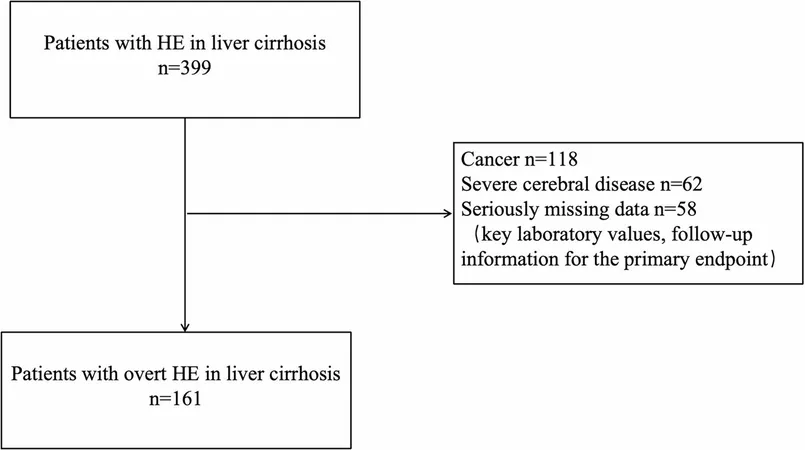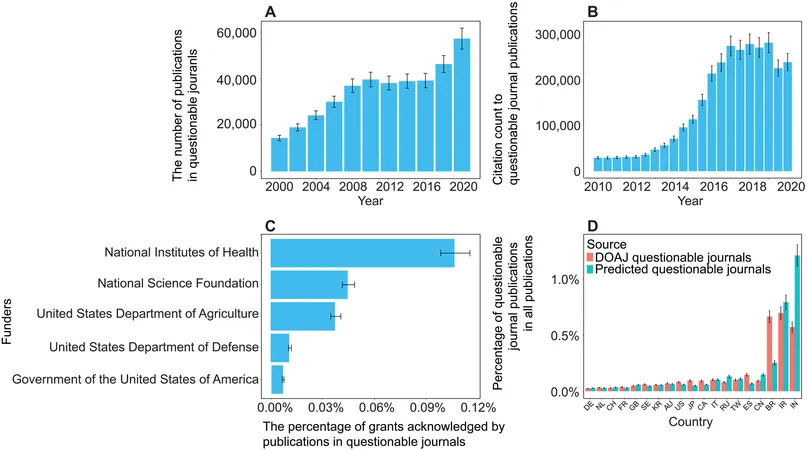
Unraveling the Deadly Connection: Inflammatory Response and Prognosis in Cirrhosis with Hepatic Encephalopathy
2025-07-28
Author: Jacques
The Hidden Threat of Systemic Inflammatory Response Syndrome
Systemic Inflammatory Response Syndrome (SIRS) is more than just a medical term—it's a life-threatening condition that significantly impacts patients suffering from liver cirrhosis and hepatic encephalopathy (HE). In recent research involving 161 hospitalized patients, 37.3% were found to be developing SIRS, posing a critical question about its clinical implications.
Key Findings: Navigating the Risks
Among the hospitalized patients, a striking 24.8% succumbed to their condition. The study revealed alarming correlations between SIRS and increased mortality. Key risk factors identified included a Model for End-Stage Liver Disease (MELD) score above 18, elevated serum inflammation markers, and clinical signs such as high white blood cell counts and bilirubin levels.
The Grim Data: Survival Rates Exposed
The stark statistics tell a devastating story. Patients with no SIRS had a 28-day survival rate of 95.8%, whereas those with higher SIRS scores faced dramatically lower likelihoods of survival: 12.5% survival for those with a score of 4. Those with MELD scores exceeding 18 who developed SIRS had a staggering 62% mortality rate.
A Wake-Up Call for Medical Intervention
These findings underscore a critical need for healthcare providers to promptly identify and treat SIRS in patients with liver cirrhosis and HE. Early intervention could potentially improve survival rates in these vulnerable patients.
Cirrhosis: The Underlying Crisis
Cirrhosis, primarily caused by viral infections or alcohol, leads to serious complications like fluid buildup, bleeding, and encephalopathy, ultimately resulting in hospitalizations and poor quality of life. SIRS is often triggered by infections and is central to the deteriorating condition of cirrhotic patients.
Hepatic Encephalopathy: Intersection of Chaos and Confusion
HE presents severe neuropsychiatric symptoms and is a frequent complication in cirrhotic patients. With a rising incidence of HE, understanding the role of inflammatory response is crucial for preventing its progression and improving patient outcomes.
Revelations from the Study Design
This comprehensive study was conducted at the Second Hospital of Nanjing, using retrospective data to analyze clinical profiles. The rigorous inclusion criteria ensured that subjects accurately reflected the complexity of cirrhosis and HE, bolstering the credibility of the findings.
Calls for Further Research and Consensus
While the study presents significant insights, limitations exist, such as the retrospective nature and a sample size that may not encompass all cirrhotic conditions. Future research should focus on larger, multi-center studies to validate these findings and refine treatment protocols.
Final Thoughts: A Critical Intersection of Inflammation and Outcome
The study reinforces a pivotal understanding: SIRS is not just a side effect; it's an independent risk factor for mortality in cirrhotic patients with HE. By maximizing early detection and treatment for this inflammatory syndrome, healthcare providers can hope to turn the tide against the high mortality rates seen in this fragile patient population.









 Brasil (PT)
Brasil (PT)
 Canada (EN)
Canada (EN)
 Chile (ES)
Chile (ES)
 Česko (CS)
Česko (CS)
 대한민국 (KO)
대한민국 (KO)
 España (ES)
España (ES)
 France (FR)
France (FR)
 Hong Kong (EN)
Hong Kong (EN)
 Italia (IT)
Italia (IT)
 日本 (JA)
日本 (JA)
 Magyarország (HU)
Magyarország (HU)
 Norge (NO)
Norge (NO)
 Polska (PL)
Polska (PL)
 Schweiz (DE)
Schweiz (DE)
 Singapore (EN)
Singapore (EN)
 Sverige (SV)
Sverige (SV)
 Suomi (FI)
Suomi (FI)
 Türkiye (TR)
Türkiye (TR)
 الإمارات العربية المتحدة (AR)
الإمارات العربية المتحدة (AR)